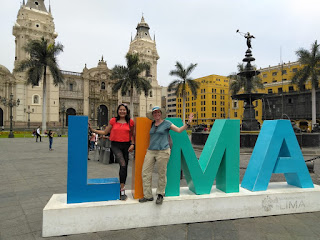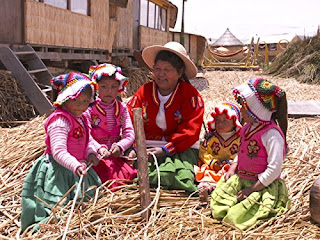AFRO-PERUVIAN CULTURE MONTH: HOW THEY ENRICHED OUR HERITAGE ♥
Each june of every year, Peru celebrates the Afro-Peruvian culture month, or - as I've seen on google - "Peru celebrates black history month", but let's be more specific, because probably, and different from other countries, the black peruvian populations are most likely to be descendants from the african slaves who came and adapted their habits to the burgeoisie lifestyle that had its presence in Lima.
So, the africans where brought by the Spaniards in order to start working at the farms.
Some time later they developed the house chores, and for instance, women found their place on the cooking field.
Now, the hard thing was once they arrived to the houses of high-class people, the difference was really notable as, for example, they were not allowed to sit at the same table as their masters, or even eat the same food. They were fed with the entrails of animals, thoe parts that - back in those times - would never be eaten by "normal" people.
However, this is why we now have a world-famous gastronomy, because they appealed to their creativity and with the help of condiments, garlic and onions they made from those never-eaten foods the most delicious delicacies that are nowadays, such as:
The Cau Cau, a stew whose main ingredients are guts, mixed with potatoes and rice.
The Anticucho, consisting on brochettes of seasoned cow's heart, served with potatoes and corn.
Besides the food, another field that they've made richer is the music. To be honest they've come up with special rhytms, steps and a kind of dancing that demands hard movement of the hips and many shakings too... Yes, I'm talking about the Festejo Peruano.
So, a picture worths more than a thousand words. Another detail is dancing barefoot, because as the afro-peruvian slaves were poor, their clothes were practically always the same.
But let's go a little bit further back, and this is another rhytm, where stomping is the main thing to do, it's called Panalivio. I'd say this is much deeper and touching as the dancing reflects the slaves being handcuffed, and the song lyrics talk basically about going to work and then when the chief arrived with a whip in the hand (as a method to punish the ones who weren't working well or just doing nothing).
Panalivio was before called "penalivio", which is a combination of two spanish words: "pena", that means sorrow and "alivio", that means relief. So, the songs they made were abour irony and optmism so they can relieve the sorrow they were feeling.
Also, we can't end this post withour hghlghting the importance of the Afro-Peruvian heritage within the religious field, and the best examples we have here is, first, the first mulatto Saint of America: Martin de Porres
Mulatto: A person who was born from a white mother and a black father.
His nickname was "The broom saint", as he was always represented with that object as a symbol of humility. Before becoming a friar he used to be a barber and herbalist. There was one time when he offered himself to be sold as a slave because his convent was going through a financial crisis, but his superiors didn't allow him.
He also used to teach Christianism to indians and black people on the streets as well in farms where he develop his herding vocation.
Another important character is Teresa Izquierdo, who as a little girl used to go with her mom to cook for the rich families and that's how she felt in love with the cooking. After some time she discovered that more than earn income it was a way to tell stories.
We're a diverse country because of them
And we owe nothing but respect to them. We've overcame slavery and discrimination so it's time to embrace them all and speak out whenever we feel or see that they're being treated differently just because of their skin color.
Thank you for reading.
Sharing is caring.
.
Kusikuy Travel Team










Comments
Post a Comment